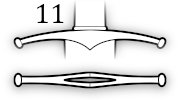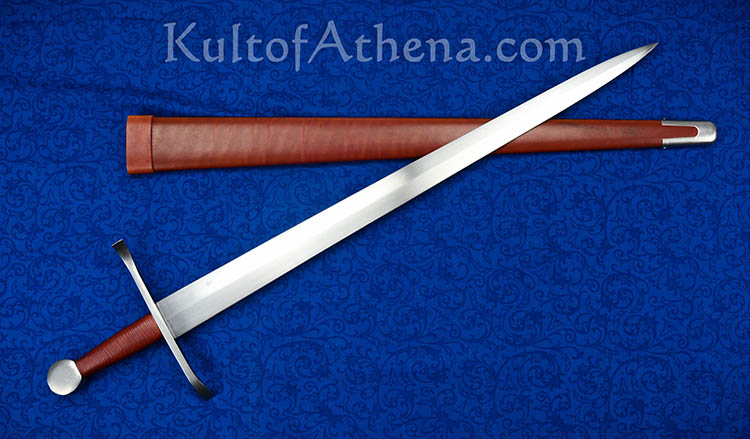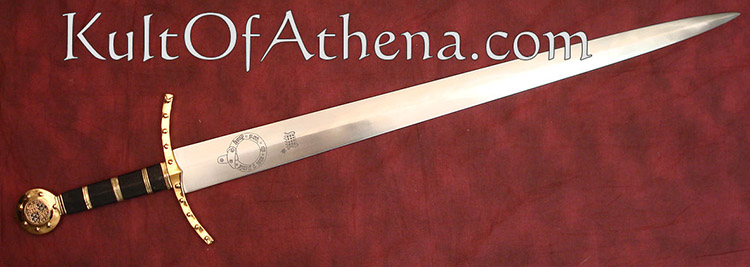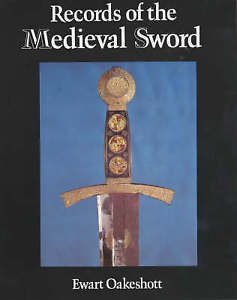Recent Articles
-
Christmas Sword Buying Guide 2025
Dec 03, 25 10:53 PM
Oakeshott Type XVIII Swords
Type XVIII- Type 18
 Blade Length: 27-36"
Blade Length: 27-36"

COMMON POMMEL TYPES








COMMON GUARD TYPES

Typically Hollow ground or with a raised central rib to reinforce the blade in the thrust, but tapers gradually to a point making it both effective in the cut and the thrust. Any type of cross guard from the era could be used, but type 11 (pictured) with a downward curve was prominent. Used throughout the 15th century as lighter armor was used in response to increased use of projectile weapons on the battlefield.
The Oakeshott type XVIII was in many ways a throwback to swords of the earlier medieval period. As the increased use of powerful missile weapons began to dominate the battlefield of the 15th century, even the best plate armor was becoming less effective, and the heavier armor types started to be discarded - though were still in use, so simply going back to cut orientated swords was not a suitable solution.
Instead, they combined the best features of armor piercing blades with dedicated cutters, swords broad at the base with a reinforced diamond cross section terminating in the classic armor piercing tip.
Within the Type XVIII classification were many sub-types, and this sword was immensely popular from the period dating from approximately 1410 for at least 100 years and quite a few surviving examples, from swords for footsoldiers to blades literally fit for a King.
Replicas of Oakeshott Type XVIII Swords
There are quite a few decent battle ready replicas of the Type XVIII swords. Below are the most historically accurate, yet relatively affordable, models currently on the market.
Designed by the legendary Gus Trim, this classic Type XVIII is well balanced, well made and a faithful replica at an entry level price point and would have to be the first choice for anyone looking to buy a historically accurate version of the XVIII. You can clearly see from the blade profile alone that it is a good cutter, and the diamond profile tip is would wreak havok if thrust into the weak points of plate armor.
A sword for the 15th century gentry and nobility. In their own words: "The blade is a fine example of a type classified as Oakeshott XVIII (according to Oakeshott's The Sword in the Age of Chivalry), combining broad width at the cutting section with a strong awl-shaped point...supremely effective in both thrust and cut."
This is a sword truly fit for a King - and as one of Arms and Armors most expensive recreations, costs a Kings ransom to be able to afford to buy one. But this faithful recreation of a sword that was the focus of some controversy if it really was Edward's (argued by Oakeshott, who provided enough evidence in the end to strongly suggest that it was) is both historically accurate and truly beautiful in every aspect.
Further Resources
MyArmory has an excellent in depth article on Type XVIII swords here which explains their history and lists some high end reproductions and images of actual antiques.
And of course, you can - and should - read more about these swords and all the others in the Oakeshott Typology in his book, Records of the Medieval Sword
I hope this information on Oakeshott Type XVIII Swords has been helpful. To return to Oakeshott Typology Made Easy from Oakeshott Type XVIII Swords, click here

Buying Swords Online Can Be DANGEROUS!
Find the Best Swords in the:
Popular & Recommended ARTICLES

The ONLY true free online magazine for sword enthusiasts. Delivered once a month on the 1st day of the month, no filler and no BS, just the latest sword news & info delivered straight to your inbox.

















